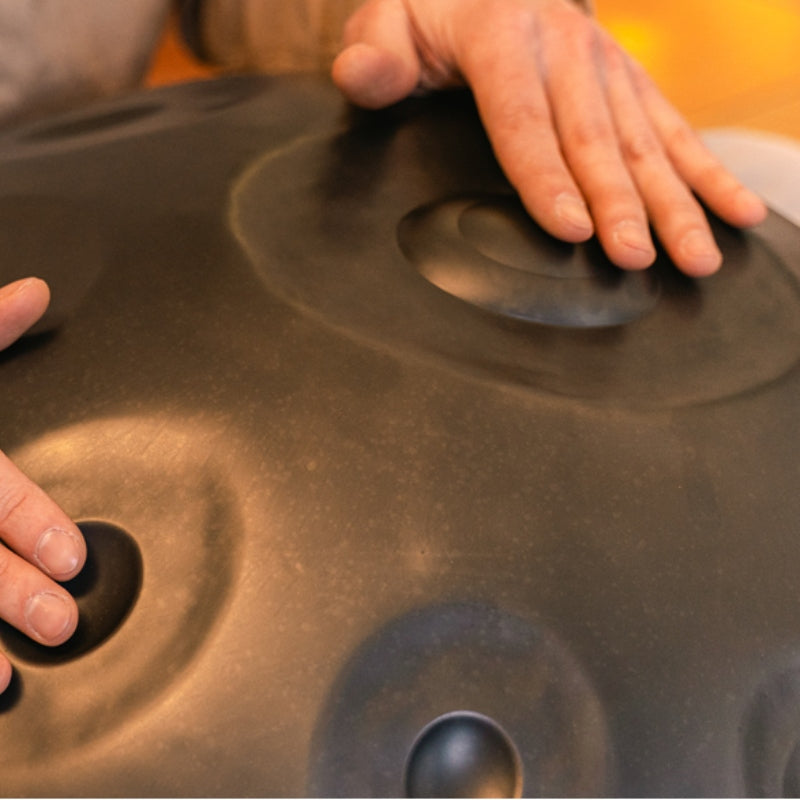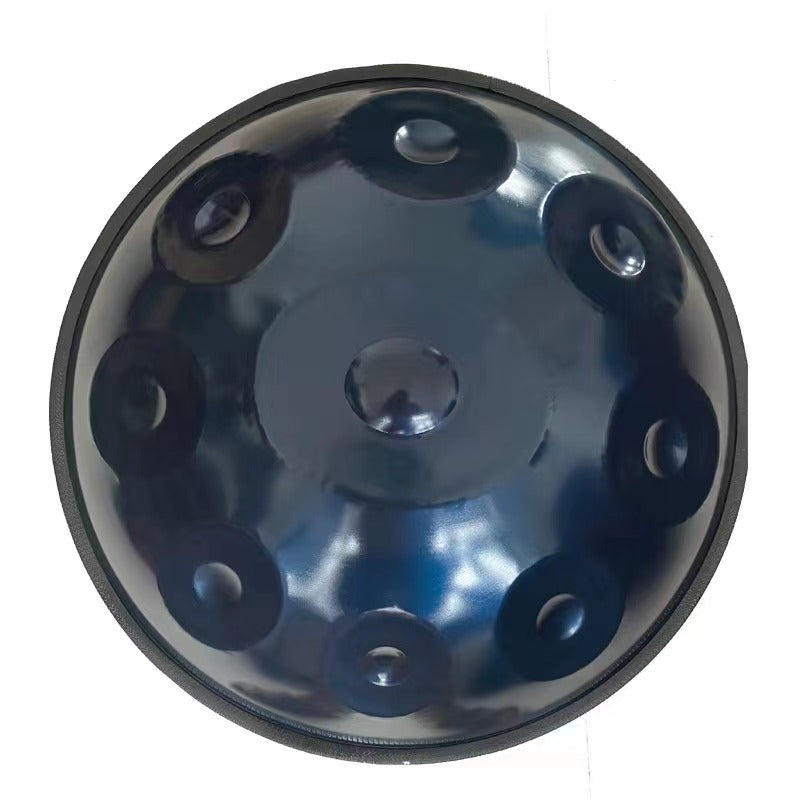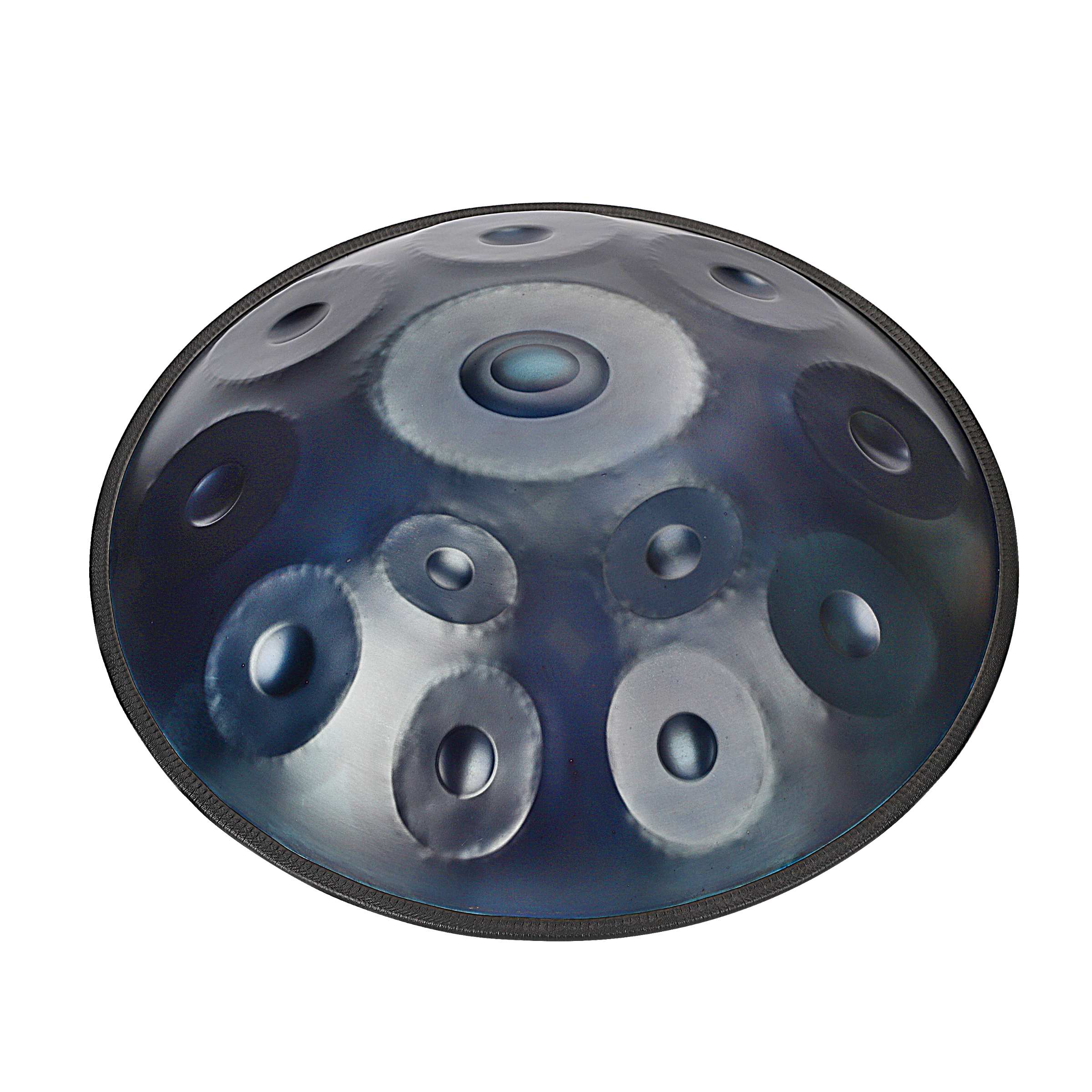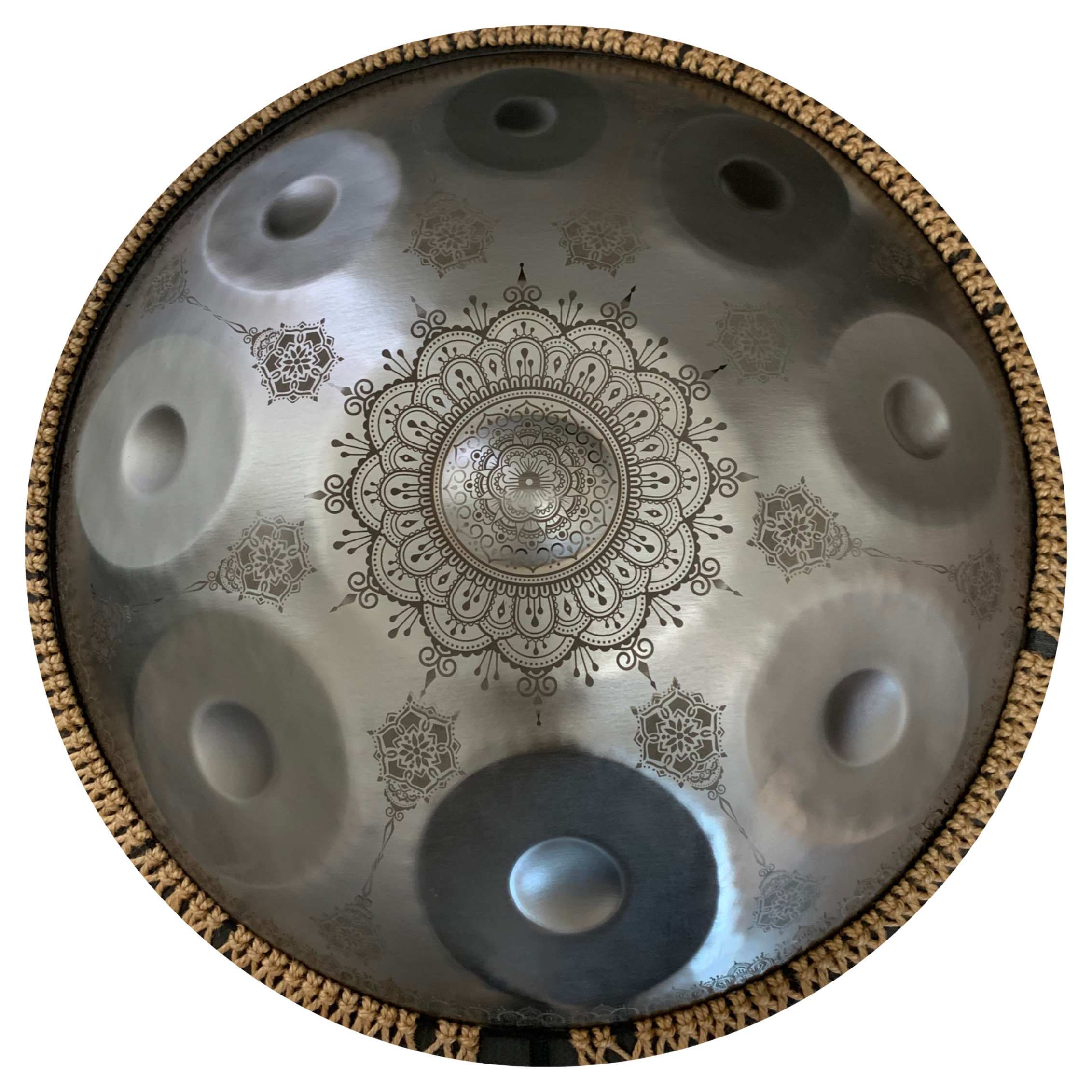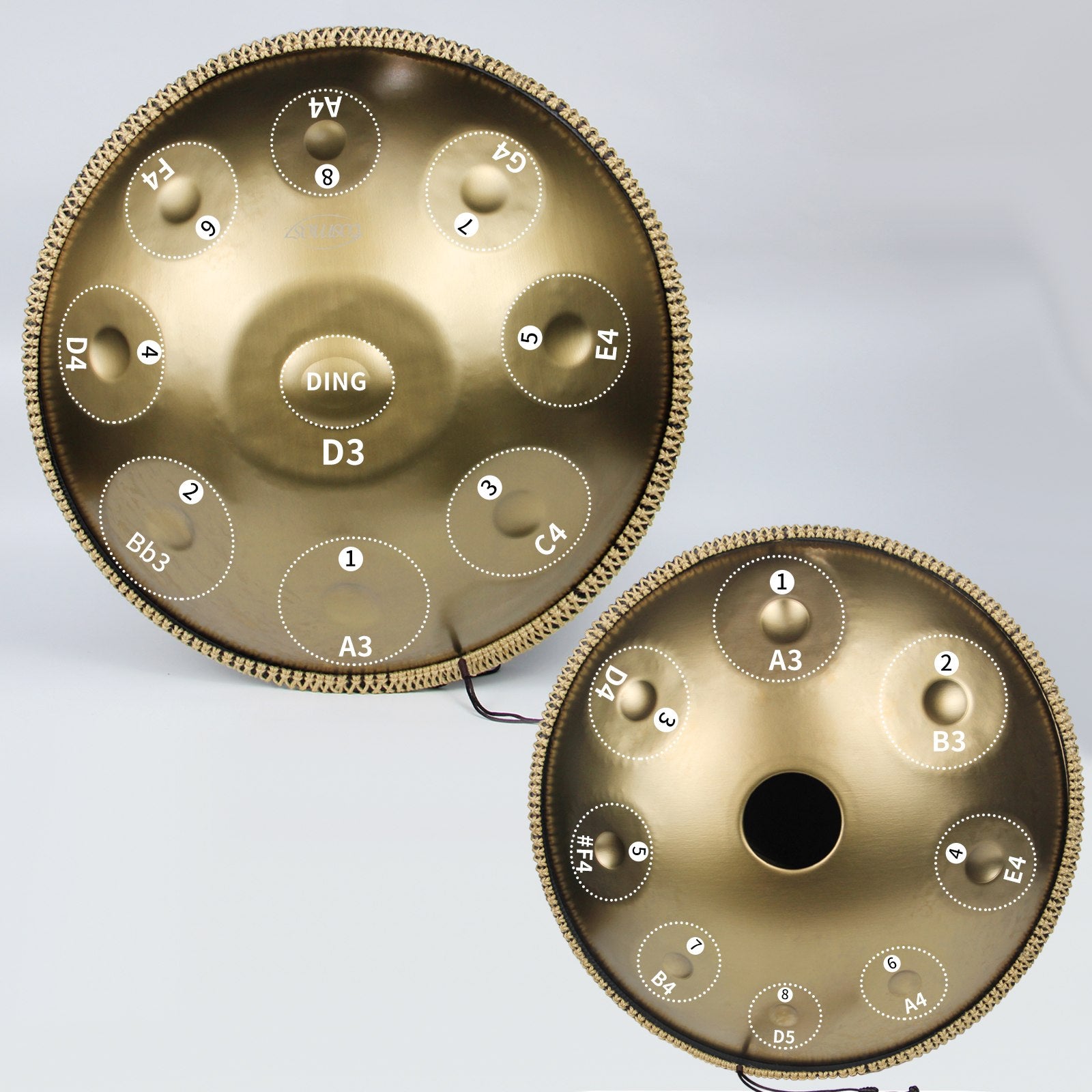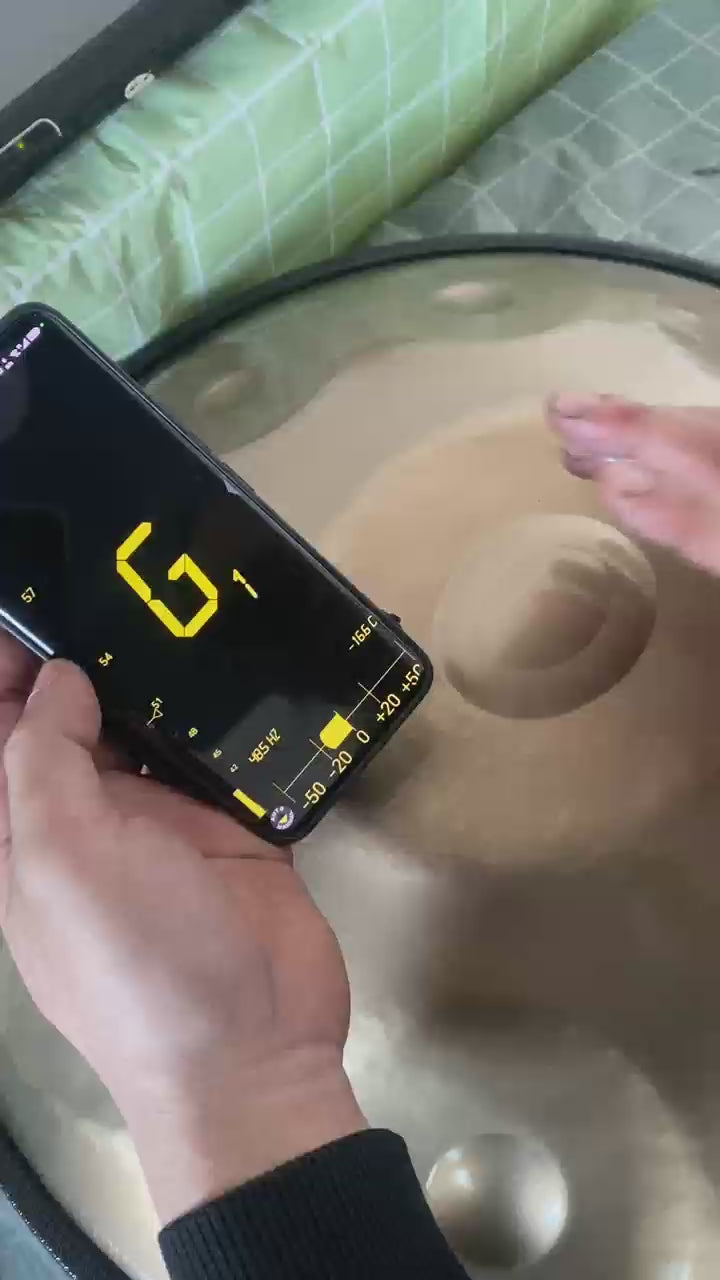The handpan is a fascinating and captivating instrument that has grown in popularity over the past few years. Each handpan is different in its own way. Similar to how you look for friends that match your style, interests, and personality, there are some aspects involved when looking for your ideal handpan. The handpan instrument might seem complicated to beginners, but if you approach it correctly, you can learn to play it in no time. In this article, we’ll discuss some tips!
Understanding The Structure Of The Handpan
Every beginner should first understand the basic structure of the handpan pan drum before they start playing it. The instrument is made up of two metal shells that are merged. While this sounds simple, it takes ample skill and craftsmanship to make it. Its upper side consists of several “tone fields,” whereas the lower side contains a resonance hole called the “Gu” hole.

- Ding -In the middle of the upper shell, there’s the biggest tone field known as the “Ding.” This particular note often creates a deep, resonating sound that usually serves as the scale’s main or root note.

- Tone Fields - Around the Ding, there are multiple smaller tone fields, which are all tuned to a specific note. The total number of tone fields is different depending on the handpan, but nearly all of the beginner instruments usually have between 7 to 9 notes.

- Gu Hole - The handpan’s bottom shell consists of a hole called the Gu. It helps to create resonating and deep tones that resemble a bass. Hitting the Gu in specific ways can make percussive sounds that further add rhythm to what is being played.
Picking The Ideal Handpan For Beginners
Choosing the right handpan is essential to a beginner’s learning experience, especially since there is a wide range of tunings and scales available. It’s also essential to select a scale that matches your musical tastes and goals. The majority of beginner handpans are often tuned to a diatonic scale (like D minor), offering harmonious notes that can be easily played together.
- Selecting a Scale -It’s often recommended that beginners choose scales like Celtic Minor, D Minor, or Integral because of their balanced and calming sound. These scales are instinctive, with the notes naturally complementing each other. This makes it far easier for beginners to create melodies without any trouble.
- Quality Of The Instrument -While you might have to spend some extra money, make sure to invest in a handpan that’s crafted well. Instruments that are poorly made often have inconsistent tuning, making it frustrating and difficult for you to learn. Search for handmade handpans from reputable makers since they provide better sound and quality.
Handpan Courses & Workshops
Once your instrument is all set, search for a handpan workshop that can help you learn more about a handpan. It’ll allow you to dive deeper into its origins, materials, making process, and more, but more than anything, it’ll put you in direct contact with the handpan so that you can create your first unique melody. Similar to workshops, the discovery courses play the same role.
These courses give you the ability to enter the handpan world and share your unique and fun impressions with others in a friendly environment. You can have fun playing the handpan in no time and without any prior musical knowledge or training in this instrument. Nowadays, nearly every beginner workshop and discovery course offers teaching material to new learners.
This means that you won’t have to personally own a handpan to learn about the instrument or learn to play it in the beginning. Since these workshops and courses are present in many cities and are rapidly increasing in popularity, you’ll easily find one on the net taking place near you. You can also contact handpan sellers or music shops to find out more about these workshops.
Explore Different Handpan Lessons Or Learn With Friends
It doesn’t matter if it’s individually or in a group; handpan lessons allow learners to completely immerse themselves in practicing the instrument with a proper educational approach. It’s an amazing way to learn to play the handpan through a teacher who constantly follows you and helps you move forward. This approach helps you decide if the instrument is actually for you!
You’ll also come across a large number of courses that provide a load for a handpan so you can start your lessons. Following the first few weeks of months of practice, you’ll get a good idea of what you feel about the instrument. At times, it’s easier for people to learn the handpan in a small group, especially for people who are reserved and find themselves at ease with a friend.
Request them to help you take your first steps on a handpan, ask them to use it in front of you, play it, and put it on your legs to feel its vibrations. The good thing about this option is that it’s friendly, exciting, and, of course, free. While it has some limits, it’s an easy solution for a first-time experience, so don’t hesitate to reach out to someone who has knowledge about it.
Rent Your Handpan
If you don’t want to spend money on the instrument, even a handpan drum for sale, you can consider renting one. This allows you to see if the percussion instrument really suits you before you invest a huge amount of money in it. This option is often utilized by music schools or shops for violin, guitar, piano, etc. You can begin the hunt by asking around in your particular area.
Sit Some Time With Your Handpan
Once you have picked out your handpan, sit comfortably in front of a mirror with the handpan on your lap and see your posture. Keep the handpan either on your legs or a stand at a suitable height, anything that you’re comfortable with. However, make sure that the instrument’s resonance hole is completely free and does not touch your legs. Posture is everything here!
Loosen your arms, hands, and shoulders to get the ideal playing motion. Try playing the scale while sitting in front of a mirror since this is how you start playing the handpan. In addition, try out different hand positions and striking techniques by using your fingertips. After that, slowly start exploring by striking with other parts of your fingers for different types of tones and sounds.
Watch Tutorials On YouTube
There’s only one place that comes to everyone’s mind whenever we talk about tutorials or learning something, and that is our friendly neighborhood application, YouTube. Whether it’s learning a language, a particular recipe, or playing the handpan, everything seems within reach with the help of YouTube. You won’t run out of tutorial videos when learning to play a handpan.
The first thing you should do is to take some time from your busy schedule to listen and watch professional handpan musicians playing the instrument. Building on this, you can go one step ahead by following multiple tutorial videos on learning how actually to play the instrument. On top of this, this approach is relevant and accessible to everyone, so you’ve got nothing to lose.
Play The Handpan With Different People
Learning to play the handpan becomes far more interesting and easier with other people. This is an extremely refreshing exchange that works on getting advice on your playing techniques, rhythms, melodies, and more. However, make sure that you listen to everyone’s advice and comments and try not to put yourself forward a lot since humility and kindness go a long way.
These encounters will help you progress further in your journey of learning the handpan. These meetings with other players are organized regularly in either large or small groups. However, try not to panic if you don’t find any players in your neighborhood. In this situation, what you can do is send out a call on a particular forum or group on your available social media channels.
Once you start doing that, you’ll notice that you’re not the only person in the same dilemma since there are many others who’re on the same search. You can also meet a lot of other people, make some exciting memories, and create memorable jams. Never find yourself alone on this journey since you’ll always find someone out there who’s in the same boat as you.
Conclusion
Learning to play the percussion instrument is quite accessible for beginners and enthusiastic learners. The handpan is quite intuitive, so you can start composing your unique melodies in no time and have fun grooving to its rhythms and vibrations. You can find a handpan for sale online to get a discount, or you can put off buying and explore the instrument to see if it’s your style! Try not to lose hope if it gets challenging and keep practising as much as you can! You can do it!

